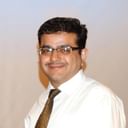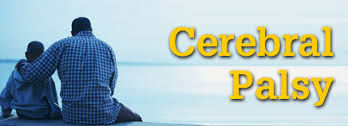Best Physiotherapy/Rehab Exercises for Cerebral Palsy/Delayed Milestones
Cerebral palsy is a term used to describe a broad spectrum of motor disability which is non-progressive and is caused by damage to brain at or around birth. It is a disorder which develops due to damage to CNS and this damage can take place before, during, or immediately after the birth of the child. The damage won't worsen but remains constant. However the child may appera to worsen if not given proper intervention not because of an increase in lesion in the brain but just beacuse the damaged brain is not able to cope up with the physical demand of the growing body and the increasing demand of the environment surrounding the child.
CAUSES:
ANTENATAL CAUSES:
- Genetic causes: First or second degree consanguineous marriage.
- Intrauterine virus infection: Rubella and cytomegalovirus infections which lead to severe brain damage along with associated visual and hearing problem with cataract.
- Hypoglycemia: Low blood sugar for long period lead to brain damage and epilepsy. Cerebellum is more vulnerable leading to ataxia and visual problems. Infant of diabetic mothers are more prone to hypoglycemia.
Trauma to the mother:
- Infection to the mother can make the baby prone to develop it.
- Malnourishment of the fetus especially in case of twins.
- Exposure to the mother’s abdominal area to repeated X-ray radiation, prolonged use of medications like steroids by mother.
NEONATAL CAUSES:
- Prematurity: Premature babies are prone to brain damage either due to trauma during delivery and later on due to immature respiratory and cardiovascular system. Therefore, they are likely to develop hypoxia and low blood pressure also, they are more likely to develop low blood sugar, jaundice and hemorrhage because of liver immaturity.
- Vascular causes: Occlusion of the internal carotid or midcerebral artery during birth can on many occasions lead to hemiplegia.
- Trauma: trauma can occur either due to disproportion, breech delivery, and forceps delivery, distortion of head and tearing of tentorium.
- Asphyxia: It can occur by accidents and burns which could be as a result of knotted umbilical cord, cord around the neck or prolapsed cord. Multiple deliveries can cause asphyxia of the second or third infant.
- Neonatal meningitis: Usually associated with severe residual brain damage.
POSTNATAL CAUSES:
- Delayed cry: Causes asphyxia to the brain causing CP.
- Severe jaundice: Presence of high levels of bilirubin cause basal ganglia damage leading to athetoid cerebral palsy and high tone deafness.
- Trauma: Fall of the body after birth.
- Infection: Like meningitis, or encephalitis can cause brain damage.
TYPES OF CEREBRAL PALSY:
- Basically cerebral palsy children manifest in three common ways spastic, athetoid, and ataxic.
- Spasticity seen in cerebral palsy is usually knife that may change with change in position, which means that spasticity may vary from supine to prone.
- Athetoid cerebral palsy children exhibits slow, purposeless, wormlike, involuntary movements which flow into each other. It occurs due to basal ganglia damage commonly seen in children who suffers from an attack of jaundice following birth.
- Ataxia in cerebral palsy occurs due to cerebellar damage. Both balance and coordination is affected.
PHYSIOTHERAPY TREATMENT OF CEREBRAL PALSY
- Physiotherapy is one of the most important treatments for CP that usually begins soon after being diagnosed and often continues throughout life. Special devices and equipment are needed for some people with CP to help them with specific problems like,
- A child who develops uneven leg length may need to wear special shoes with a higher sole and heel on the shorter leg.
- Some people who are not able to walk alone may need to use canes, crutches, walkers, or wheelchairs.
EXERCISES IN SUPINE POSITION
Normalizing tone of the muscles: For cases with hypo tonicity slow passive movements, sustained stretch, cryotherapy over the muscle for 15 to 20 minutes, stimulation of antagonist movement and vibrations are used. On the contrary, for cases with hypotinicity weight bearing, joint compression, rhythmic stabilization, vibrations, cryotherapy in brisk manner and taping can be used.
Weight bearing exercises: Weight bearing exercises are necessary to promote development of tone in muscles and also to maintain the absorption of calcium into the bones. Thus the patient should be given activities like bridging, supine on elbows, sitting with weight bearing on the affected arm, and standing should be given as soon as possible within the limitation of the patient’s general medical status..
Skillful TAPING gives a tactile feedback which helps in faster development of tone in the muscles. Weight bearing exercises for the involved upper limb has also been found to be beneficial in preventing this.
Bridging Exercises: The child lies on supine position. Therapist flexed his both the knees n then helps him to lift his back from the mid area so that weight bear on his legs. This should be done in 10 -15 repetitions. Then do bridging on 1 leg and then another.
Stretching and Mobility: The muscles should be maintained at the appropriate physiological length for normal muscle control and normal postural adjustment. In CP because of delay or absence of normal movement muscles are usually in a shortened position hence stretching of the muscles is essential to increase the neuromuscular control. Length of the muscles should be maintained not only through stretching but also through various functional activities.
In supine position, the therapist holds an object so that the child grasp that object by moving his body, in this rolling activity plays an important role. The child rolls right and left to grasp the object sometimes lifting his back and limbs too.
The therapist do some exercises in vestibular ball so that child balance and coordination improves and this is the best spine stretching activity.
Good neck control and developing trunk control by using vestibular ball, he lied down in ball and doing movements that extend his spine and head is looking in upward direction.
EXERCISES IN SITTING
The therapist should hold and support the child in sitting position. Time should be noted daily.
Exercises in vestibular ball to correct the balance. Sit on the vestibular ball and then shift the weight from right side to left side by rolling the ball.
Reaching far objects: As the child sitting in the ball then the therapist should stand in front of him and tell him to reach the object that the therapist holds.
Sit to stand activities and kneeling activities, sit on the toes, sitting by cross leg by maximize wide base of support
EXERCISES IN STANDING
STANDING IN BOTH THE LEGS: The therapist should hold his knees while standing as the child flex his knees and forward trunk to avoid standing.
SQUATTING: The therapist should try and help the child to do some squats about 5 to 10 daily to increase the muscle power and strength.
WALKING with the help of therapist or a cane and use a tilt board for balancing exercises.
Standing on the side of vestibular ball and do reaching objects so that the child lifts his head in upward position for increasing the extension of neck i.e. neck control.
Developing postural reaction: Postural adjustments are essential if the child is move to move freely and to adjust to various environmental demands rapidly. Motor milestones can be best achieved by good postural reactions. Postural reactions consists of righting reactions, protective extension and equilibrium reactions. Initially children first develop righting reactions. Righting reactions allow the child to orient his head in space so that the eyes and mouth are horizontal regardless of the position of the body. It also helps in maintaining the proper alignment of the head with respect to the body.
Oromotor control training: Oromotor function depends on good head control. Common Oromotor problems are: drooling, problems in sucking, swallowing, body movements associated with speech, jaw, hyper or hyposensitivity and inadequate tongue movements. Hence the therapy should consist of good neck control, developing good trunk control, use of brush to decrease drooling.
Speech therapy helps to control the mouth muscles. This therapy can be of great benefit to children with speech or eating problems. Speech therapy often starts before the child begins school and continues throughout the school years.
Both massage therapy and physiotherapy benefit some people with CP by helping them relax tense muscles, strengthen muscles and keep joint flexible.



+1.svg)
